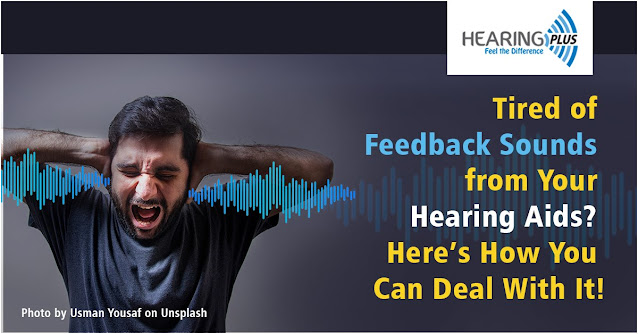The bad news? Hearing aids sometimes do create annoying feedback sounds. The good news? You can get rid of them very easily. No matter how stylish or upgraded your hearing aids are, you are sure to hear whistling sounds at some point while using them. While sometimes these sounds are normal, at other times it is an indication that something is wrong with your device. Even though the quality of sound you are experiencing with your hearing aid devices might be perfectly well, yet these whistling noises, known as feedback sounds might in a way affect your listening experience.
There are many updated digital hearing aids today which come with feedback reduction features. Feedback sounds occur when the sound finds its way back to the microphone from the receiver and hence it gets re-amplified, thus causing whistling sounds. It creates headache-inducing squealing or screeching sounds which are annoying like hell!
Causes of Feedback Sounds
- Excessive buildup of earwax
- Poorly or improperly fitted hearing aid tube
- Cracked or broken tubing
- Dislodged microphones which distort the sounds
- Too much higher volumes at certain frequencies
Types of Feedback Sounds
There are three types of feedback sounds that occur from hearing aid devices.
- Acoustical feedback - It is caused when the amplified sound produced by the speaker of your hearing aid machine is picked up again by its microphone and in the process, it gets louder and screechier which is disturbing for the user.
- Mechanical feedback - Even though it might be really very hard to deal with it, it is easily fixable. It is caused by vibrations that are created when the hearing aid speaker comes in contact with the device’s casing.
- Electronic feedback - This occurs when there is some problem in the electrical circuits of the hearing aid machine.
How to Deal with Feedback Sounds?
- Don’t tap the device hard, such as on the tabletop, thinking that it would stop the noises. No, it won’t. On the contrary, it might damage the internal parts of your ear machine.
- Never try to fix it yourself just because you have mechanical knowledge unless you fix hearing aids for a living. You might not be able to diagnose and fix the problem. Take it to your Audiologist without a second thought!
- Don't throw away your device out of frustration. Your hearing aid machine just needs a minor adjustment.
- Switch to digital hearing aids. If you are from that old school who is unwilling to upgrade to the latest digital hearing aids, then it’s time that you must. Because you have so many reasons to do so. Not only will you have an enhanced listening experience, but the modern digital hearing aid devices also come with feedback suppression capabilities. However, if you are already a digital hearing aid user and you can still hear those disturbing sounds, then there might be some problem with your device.
- Check the fit of your device. Try pushing your device deep inside your ear canal as far as possible to create a tighter seal. An improperly fitted hearing aid might allow the amplified sound waves to escape and find their way back to the microphone. This causes the sounds to be re-amplified for which they appear distorted. Ask your audiologist to fit your hearing aids properly, and also ensure that the ear tip of your machine is of the correct size and the right fit, and not just lie there in your ear canal loosely.
- Check for earwax buildup. If sounds strike against a hard block of earwax, they might bounce back out of the ear, get re-amplified, thus producing annoying sounds.
It is always recommended to consult a professional audiologist to analyze the problem that is causing feedback sounds. If there is a problem with the device, he or she will make fine-tuning or adjustments. He or she might also recommend you to go for digital hearing aids having feedback suppression features.





.png)
.png)



0 Comments